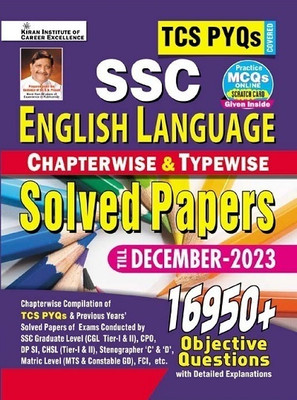
Kambojas (English, Paperback, Source Wikipedia)
Price: Not Available
Currently Unavailable
Highlights
- Language: English
- Binding: Paperback
- Publisher: Books LLC, Wiki Series
- ISBN: 9781155456188, 1155456181
- Edition: 2010
- Pages: 98
Description
Please note that the content of this book primarily consists of articles available from Wikipedia or other free sources online. Pages: 96. Chapters: Kambojas in Indian literature, A vakas, Kamboja-Pala Dynasty of Bengal, Kamboja Kingdom, Indian Kamboj educationists and writers, Alexander's Conflict with the Kambojas, Sophagasenus, Muslim Kamboh professionals and educationists, Kambhoji, Afghan, Udham Singh, Kamboj wrestlers, Khmer Empire, Apracaraja Indravarman's Silver Reliquary, Bahlikas, Maitraka, Maues, Saka Nankana, Kamboja-Dvaravati Route, Early history of Cambodia, Shaikh Gadai Kamboh, Indo-Scythians in Indian literature, Thind, Jathedar Bhai Tehal Singh Dhanju, Prithipal Singh, Rajyapala Kamboja, Muslim Kambohs in sports, Parama Kamboja Kingdom, Vishnupalita Kambhoja, Baba Amar Singh Nibber, Muhammad Saleh Kamboh, Kaura, Sage Kambu Swayambhuva, Kambojas in Brhat Samhita of Varahamihira, M. Ilyas Kamboh, Ved Prakash Kamboj, Akhtar Rasool Kamboh, Colonel Lal Singh Thind, R. K. Kamboj, Nawab Waqar-ul-Mulk Kamboh, Jamali Kamboh, Prapaksha Kamboja, Bhurishravas, Sage Kambhoja, Name of Cambodia, Bhai Mahi Singh Sunam, Arshad Chaudhury Kamboh, Har Karan Ibn Mathuradas Kamboh Multani, King Srindra Varmana Kamboj, Shaikh Sama'al-Din Kamboh, Hasan Mahmudi Kamboh, Subhan Ali Khan Kamboh, Ghulam Ali Kamboh, Ruchira Kamboj, Index of Kamboja-related articles, Nadasi Kasa, Upamanyu, Sudakshina, Kamatha. Excerpt: The Kambojas (Punjabi:, Hindi: ) were a Kshatriya tribe of Iron Age India, frequently mentioned in Sanskrit and Pali literature. The earliest mention of the name Kamboja (of uncertain, possibly Iranian, i.e. Scythian origin) is in the Vamsa Brahmana (ca. 7th century BCE). References to the Kambojas as a tribe or kingdom appear in the Mahabharata and Vedanga literature beginning in the final centuries BCE. Their Kamboja Kingdoms were located beyond Gandhara in eastern or northern Afghanistan. Some scholars describe the ancient Kambojas as a section ...
Read More
Specifications
Book Details
| Imprint |
|
| Publication Year |
|
| Table of Contents |
|
Dimensions
| Width |
|
| Height |
|
| Length |
|
| Weight |
|
Be the first to ask about this product
Safe and Secure Payments.Easy returns.100% Authentic products.
Back to top






